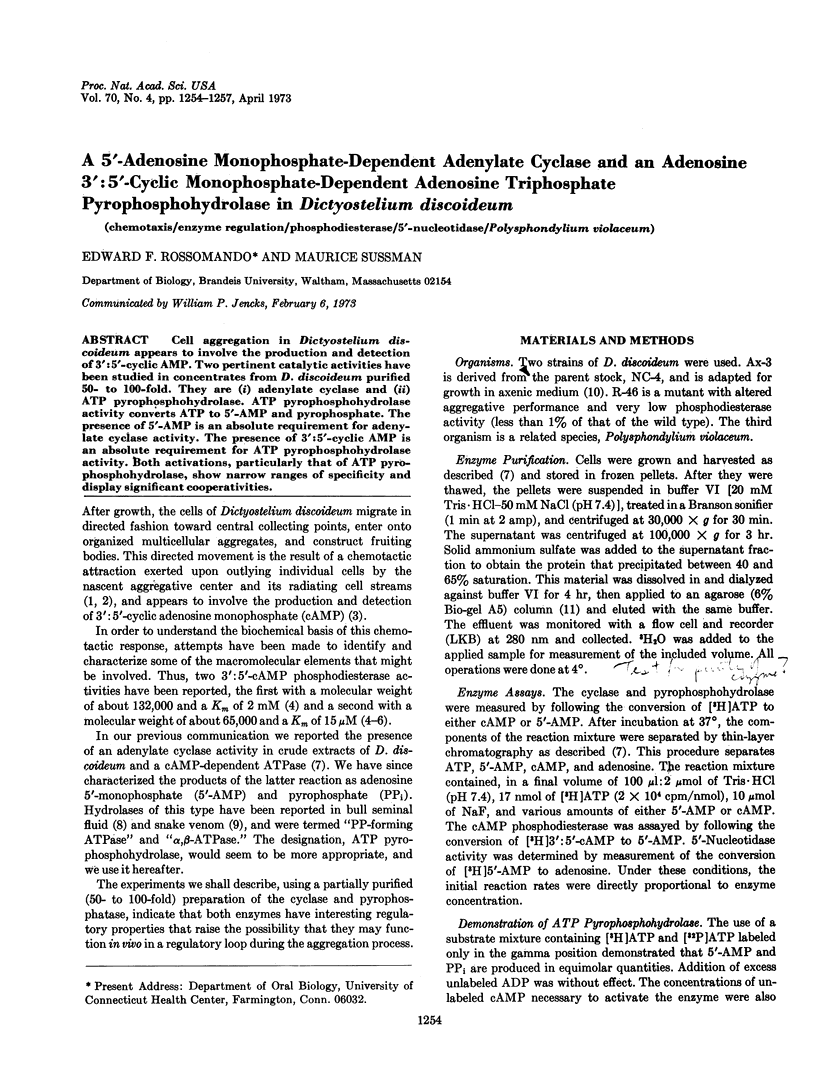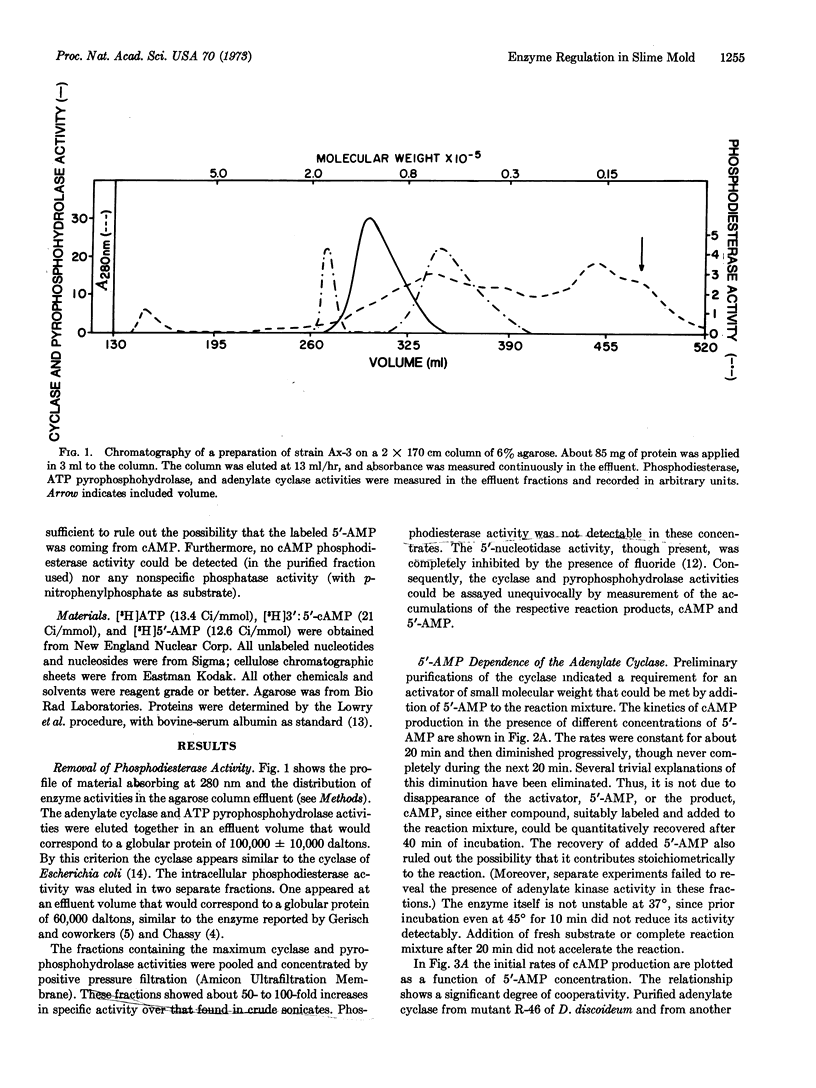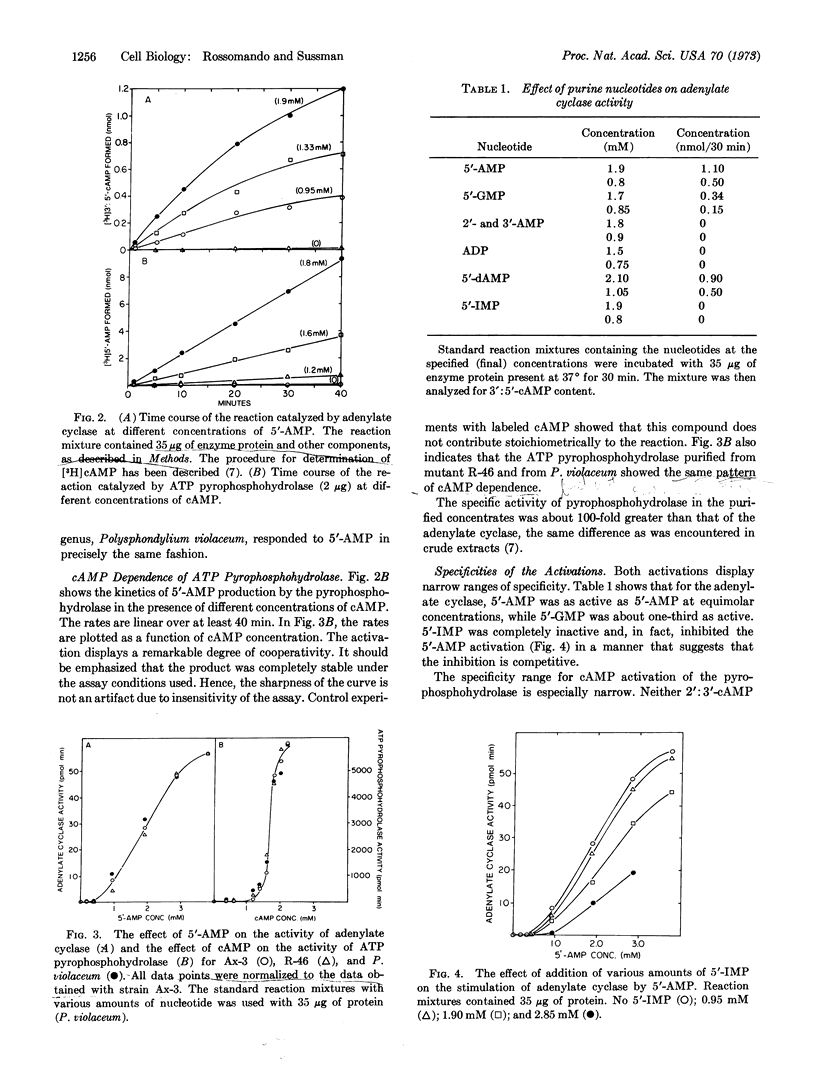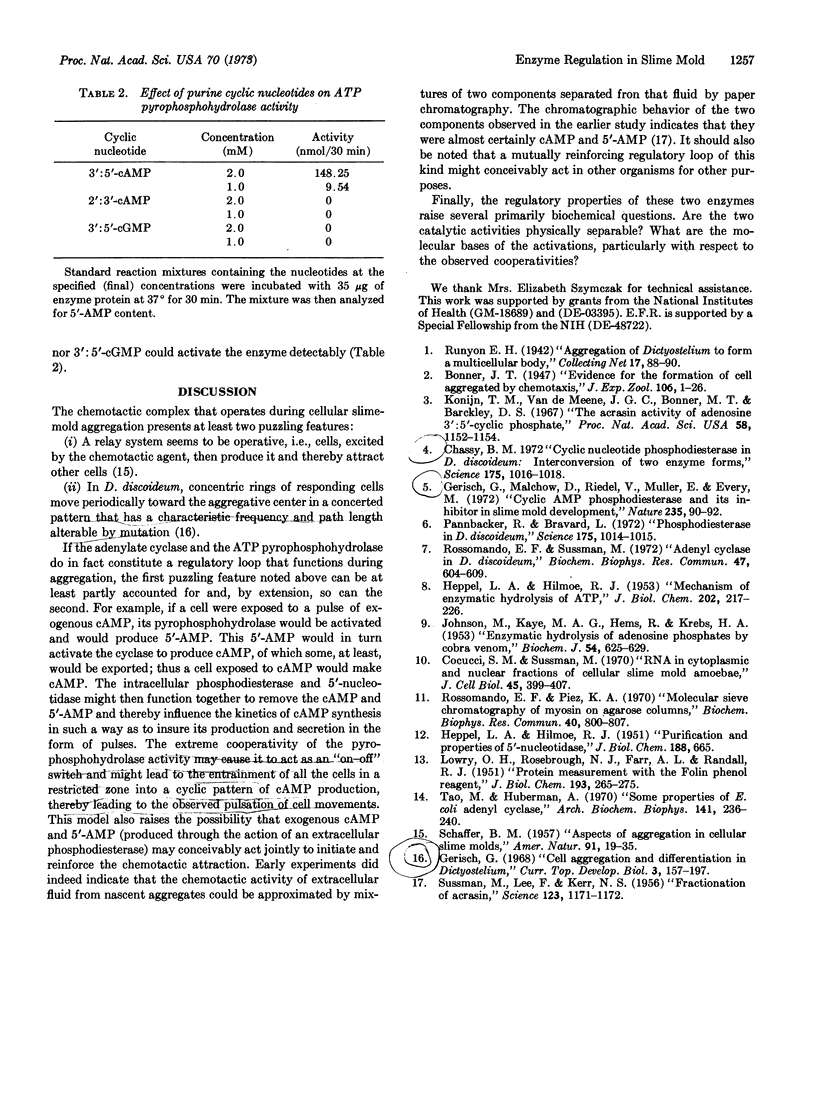Abstract
Cell aggregation in Dictyostelium discoideum appears to involve the production and detection of 3′:5′-cyclic AMP. Two pertinent catalytic activities have been studied in concentrates from D. discoideum purified 50- to 100-fold. They are (i) adenylate cyclase and (ii) ATP pyrophosphohydrolase. ATP pyrophosphohydrolase activity converts ATP to 5′-AMP and pyrophosphate. The presence of 5′-AMP is an absolute requirement for adenylate cyclase activity. The presence of 3′:5′-cyclic AMP is an absolute requirement for ATP pyrophosphohydrolase activity. Both activations, particularly that of ATP pyrophosphohydrolase, show narrow ranges of specificity and display significant cooperativities.
Keywords: chemotaxis, enzyme regulation, phosphodiesterase, 5′-nucleotidase, Polysphondylium violaceum
Full text
PDF



Selected References
These references are in PubMed. This may not be the complete list of references from this article.
- Cocucci S. M., Sussman M. RNA in cytoplasmic and nuclear fractions of cellular slime mold amebas. J Cell Biol. 1970 May;45(2):399–407. doi: 10.1083/jcb.45.2.399. [DOI] [PMC free article] [PubMed] [Google Scholar]
- Gerisch G., Malchow D., Riedel V., Müller E., Every M. Cyclic AMP phosphodiesterase and its inhibitor in slime mould development. Nat New Biol. 1972 Jan 19;235(55):90–92. doi: 10.1038/newbio235090a0. [DOI] [PubMed] [Google Scholar]
- HEPPEL L. A., HILMOE R. J. Mechanism of enzymatic hydrolysis of adenosinetriphosphate. J Biol Chem. 1953 May;202(1):217–226. [PubMed] [Google Scholar]
- HEPPEL L. A., HILMORE R. J. Purification and properties of 5-nucleotidase. J Biol Chem. 1951 Feb;188(2):665–676. [PubMed] [Google Scholar]
- JOHNSON M., KAYE M. A., HEMS R., KREBS H. A. Enzymic hydrolysis of adenosine phosphates by cobra venom. Biochem J. 1953 Jul;54(4):625–629. doi: 10.1042/bj0540625. [DOI] [PMC free article] [PubMed] [Google Scholar]
- Konijn T. M., Van De Meene J. G., Bonner J. T., Barkley D. S. The acrasin activity of adenosine-3',5'-cyclic phosphate. Proc Natl Acad Sci U S A. 1967 Sep;58(3):1152–1154. doi: 10.1073/pnas.58.3.1152. [DOI] [PMC free article] [PubMed] [Google Scholar]
- LOWRY O. H., ROSEBROUGH N. J., FARR A. L., RANDALL R. J. Protein measurement with the Folin phenol reagent. J Biol Chem. 1951 Nov;193(1):265–275. [PubMed] [Google Scholar]
- Pannbacker R. G., Bravard L. J. Phosphodiesterase in Dictyostelium discoideum and the chemotactic response to cyclic adenosine monophosphate. Science. 1972 Mar 3;175(4025):1014–1015. doi: 10.1126/science.175.4025.1014. [DOI] [PubMed] [Google Scholar]
- Rossomando E. F., Piez K. A. Molecular sieve chromatography of myosin on agarose columns. Biochem Biophys Res Commun. 1970 Aug 24;40(4):800–807. doi: 10.1016/0006-291x(70)90973-3. [DOI] [PubMed] [Google Scholar]
- Rossomando E. F., Sussman M. Adenyl cyclase in Dictyostelium discoideum: a possible control element of the chemotactic system. Biochem Biophys Res Commun. 1972 May 12;47(3):604–610. doi: 10.1016/0006-291x(72)90921-7. [DOI] [PubMed] [Google Scholar]
- SUSSMAN M., LEE F., KERR N. S. Fractionation of acrasin, a specific chemotactic agent for slime mold aggregation. Science. 1956 Jun 29;123(3209):1171–1172. doi: 10.1126/science.123.3209.1171. [DOI] [PubMed] [Google Scholar]
- Tao M., Huberman A. Some properties of Escherichia coli adenyl cyclase. Arch Biochem Biophys. 1970 Nov;141(1):236–240. doi: 10.1016/0003-9861(70)90127-x. [DOI] [PubMed] [Google Scholar]


